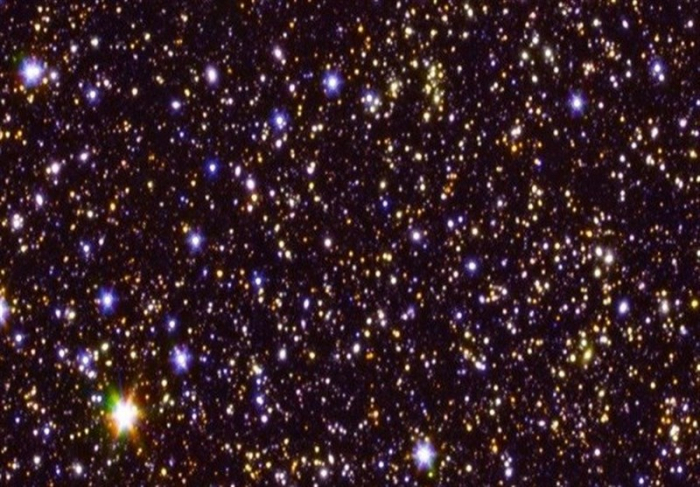They look like tiny, orange dots aglow in a sea of darkness -- not too dissimilar to the famed first image of a black hole -- but the miniscule lights imaged by Spitzer contain a host of young stars, composed mostly of hydrogen and helium. The discovery of these unexpectedly-bright galaxies could provide new clues about one of the most important cosmic events in history: the "Epoch of Reionization."
The new research, published in the journal Monthly Notices of the Royal Astronomical Society in April, required Spitzer to stare into the same region of sky for over 200 hours, studying the ancient cosmos as part of a campaign known as the GOODS Re-ionization Era wide-Area Treasury from Spitzer (GREATS). Another great, the Hubble Space Telescope, also contributed to the data.
With Spitzer trained on a region of the sky for so long, it was able to gather light that had traveled across the universe to reach us. In what amounts to a cosmic staring contest, Spitzer didn't blink. The telescope detected faint infrared signals from 135 distant galaxies, produced by high levels of ionizing radiation.
It's a particularly important finding, because ionizing radiation is believed to have contributed to the Epoch of Reionization in the early universe -- a cosmic transformation that shaped the universe as we know it today. Astronomers are still stumped as to what exactly caused these changes, but the early galaxies detected by Spitzer may provide some clues.
"Our latest Spitzer result reveals how different these early galaxies are to those at later times and pinpoints our sample as a key set for providing insights into how galaxies so efficiently reionized the universe," said Garth Illingworth, a co-author on the new study.
The results were surprising for Michael Werner, project scientist with Spitzer at NASA's Jet Propulsion Laboratory.
"We did not expect that Spitzer, with a mirror no larger than a Hula-Hoop, would be capable of seeing galaxies so close to the dawn of time," he said in a statement. "But nature is full of surprises, and the unexpected brightness of these early galaxies, together with Spitzer's superb performance, puts them within range of our small but powerful observatory."
Spitzer, launched in 2003, is an infrared observatory in an Earth-trailing orbit operated by NASA and the California Institute of Technology. It carries three instruments that allow it to "see" across the wavelengths of infrared light, providing spectacular views of the gaseous, dusty distant cosmos.
















































